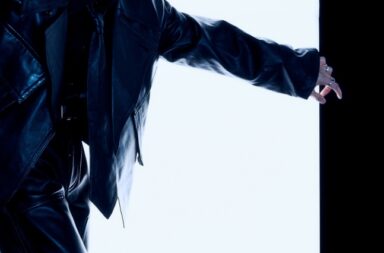 A lot of K-pop is about perfection and its attainment thereof. It can be seen in every aspect of the idol world, from hours-long dance practice sessions that ensure perfect performances, to plastic surgery to fix any so-called imperfections, to reality shows that are scripted: nothing is left to chance.
A lot of K-pop is about perfection and its attainment thereof. It can be seen in every aspect of the idol world, from hours-long dance practice sessions that ensure perfect performances, to plastic surgery to fix any so-called imperfections, to reality shows that are scripted: nothing is left to chance.
Even in live performances, every move an idol makes on stage is micromanaged, including hand gestures, looking into a specific camera at a specific time and ad-libs, which are all decided upon and practised beforehand; and along with other helpful aids like backing tracks and pre-recordings, much effort is put into making a live performance as flawless as possible.
The aforementioned may help give the appearance of a well-executed performance, but they also sap the life out of them: there is no spontaneity, no risk or danger of messing up, because the safety net cast for them is too big and wide. The thrill that fans usually get from viewing live performances is dulled when one performance is almost indistinguishable from the next save for changes in outfits — which may be why it’s so astonishing and memorable when things don’t go to plan.
Companies, broadcasters, idols, everyone, may be working to ensure that nothing goes wrong during a performance, but nothing, not even bountiful skills and talent and endless practice time, can make on-stage gaffes unavoidable. Given the laws of probability and the number of performances that an idol group gives during a promotional cycle, at some point something has to go wrong. And there are many ways they can go wrong, with the idols themselves, or externally.
For example, there are vocal mistakes: cracking voices, off-key singing and missed high notes would be included in this category. Since an idol’s main job technically should be to sing, these mistakes may be hard to swallow; but considering that idols nowadays don’t just sing (they often have to dance at the same time, for instance), and taking into account the toll that busy schedules may take on their voices, one can empathise with idols when they are having an off-day. Or, you know, they just can’t sing — after all, modern-day idols have many talents, and singing doesn’t seem to be a mandatory component for a skill set. But, unless lip-syncing is involved, there is anticipation over whether someone will be off-key, whether their voice will waver, whether they will hit that high note. I, for one, have been tuning into Exo K‘s live stages just to see if D.O. would finally pull of that high note at the beginning, but more seasoned performers aren’t immune either; just ask Onew, serial voice-cracker, or Taeyang — he messes up one ad-lib, and it’s still talked about (from 1:20).
K-pop isn’t just about the singing — there’s dancing too, and with it comes a whole new slew of risks. Although idols put in many hours in the dance studio, things don’t always work out on stage, with factors such as different environments, missing members due to clashing schedules (resulting in choreography changes), and tiredness due to busy schedules working to increase the likelihood of these mistakes. Usually these are small mistakes: a hand movement may be a little late here, or someone may have started to turn a little earlier that the others… or your main dancer performs different choreography to everyone else for a whole seven seconds (from 3:10).
And then there are the falls. The lethal combination of slippery stages, impractical shoes and complicated choreography sometimes seems too irresistible to not succumb to temptation and just hit the ground. When a member falls during a performance, there is a dramatic change in the visual image presented — one minute there are five people dancing; next thing you know, that number’s down to 4 — and there are also effects on the subsequent choreography. Will the member get up in time for the next move? Suddenly, a run-of-the-mill performance may become akin to a thriller full of suspense, if only for a few seconds. There’s just something about watching an idol leaping back up after taking a tumble and continuing as though nothing had happened, like Kara’s Seung-yeon in a live “Lupin” performance.
Of course, while some falls can be laughed off, there are more serious cases, such as f(x)’s Krystal’s fainting spells due to her anemia; and besides, falling isn’t the most painless experience. But at least that is not as bad as what happened to Dalmation vocalist Danny during his group’s comeback stage for “The Man Opposed.” Leader Inati was really getting into his rap — so much so that all his wild gesticulating led him to accidentally punch Danny (from 1:15) . I did admire Danny for getting back up and finishing the performance though, even with bleeding gums.
There are myriad mistakes that are out of the control of the artists themselves that manage to affect their performance — known collectively as “technical difficulties.” Any time one of these types of errors occur, fans are very quick to denounce the television program, TV network, PD, cameraman, crew, etc., though this sentiment is understandable — the dubious production values of live concerts and shows is no secret. Another common technical difficulty is that of faulty microphones that give out halfway through a performance, resulting in members playing pass-the-mic so that there is a microphone available for whoever is leading the singing at that time. See, all those rappers and dancers do come in handy! And even the mic passing business is fraught with danger, especially when dance solos are involved. Generally, the dancer passes the mic to another member for safekeeping, and have it passed back to them after their solo. At least, that’s the plan. SHINee know about this all too well — Key bungled a microphone pass to Taemin during a “Replay” performance, and it seems their mic troubles have only continued over the years.
And don’t forget the window dressing: whether it’s SNSD losing their lollipops or various other wardrobe malfunctions, it seems that the aesthetics of live performances are just as fraught with danger. For example, guitar straps can fall off, pants can rip, and stages can sink to the ground — B.A.P suffered from this dilemma with their bunny starship set during “Warrior” promotions. There’s also the incident involving Davichi and confetti (from 3:00), with the moral of the story being to never throw confetti on people while they are singing.
When every aspect of a performance is planned for and set in stone, these kinds of unexpected happenings are a reminder that these idols are all human beings after all, and not machines programmed to perform the same routines on cue, time and time again. These little things provide something different for fans who have religiously watched every single live performance that a group gives. Of course it’s not the kind of performance variety they have in mind, watching their bias making a mistake on stage. But, there are some groups who have made efforts to liven up their stages beyond the usual costume changes and remixes.
DBSK is one group who switched things up for their “Balloons” promotions, with performances dressed up as Smurfs and Super Mario. But, Super Junior takes full advantage of fans’ attentiveness to provide more fanservice, and fit many little easter eggs into their performances, including mini paper-rock-scissor games, high fives, and some fodder for the shippers. For their “Marry U” promotions, they even had a different member “propose” by singing the last line of the song (from 4:22).
If you were to watch the video in its entirety, you will realised that it is in fact a compilation video of all the mistakes and other funny things that have happened during Super Junior promotions — and this is part 2 of 10. There are many videos like this featuring K-pop artists floating around on the internet, which would suggest a keen general interest interest in every part of an idol’s performance, including their mistakes. It seems that whatever idols do, they will always be perfect to their fans.
(xfallenxaznx, Ana0411100, mikekpop, MaLaa0910, maggie198333, CrazyCarrotExtra2, 41lumiere, KBS, MBC, SBS)


